I'm currently reversing the smallest pe file. Here is what I analysed :
The program print * 268b universal tiny PE\n and return exit code 26 (which is the string length)
(1): Magic DOS Signature header
(2): e_lfanew address of PE header
(3): PE Signature Magic
(4): Machine code 386
(5): Optional Header magic Signature
(6): Address Of EntryPoint : 0x00000107
(7): jump to 0x0000001e
(8): push 0x004000e4 (which is address of the string)
(9): the string at 0x000000e4
(10): call 0x00400044 (which call (a) 0x00000062 which refers to (b) `printf` string )
(11): jump to (12) 0x00000034
(12): add esp,0x4 (to restore the stack due to call)
(13): ret (which should exit the program because we are not in a call ?)
Questions:
- Why (a) is 0x00000062 (and not 0x00000064 because printf start at 0x00000064) ?
- Why the program return 26 (aka the length of the string) ?
- How would we add instructions to return specific exit code ?
